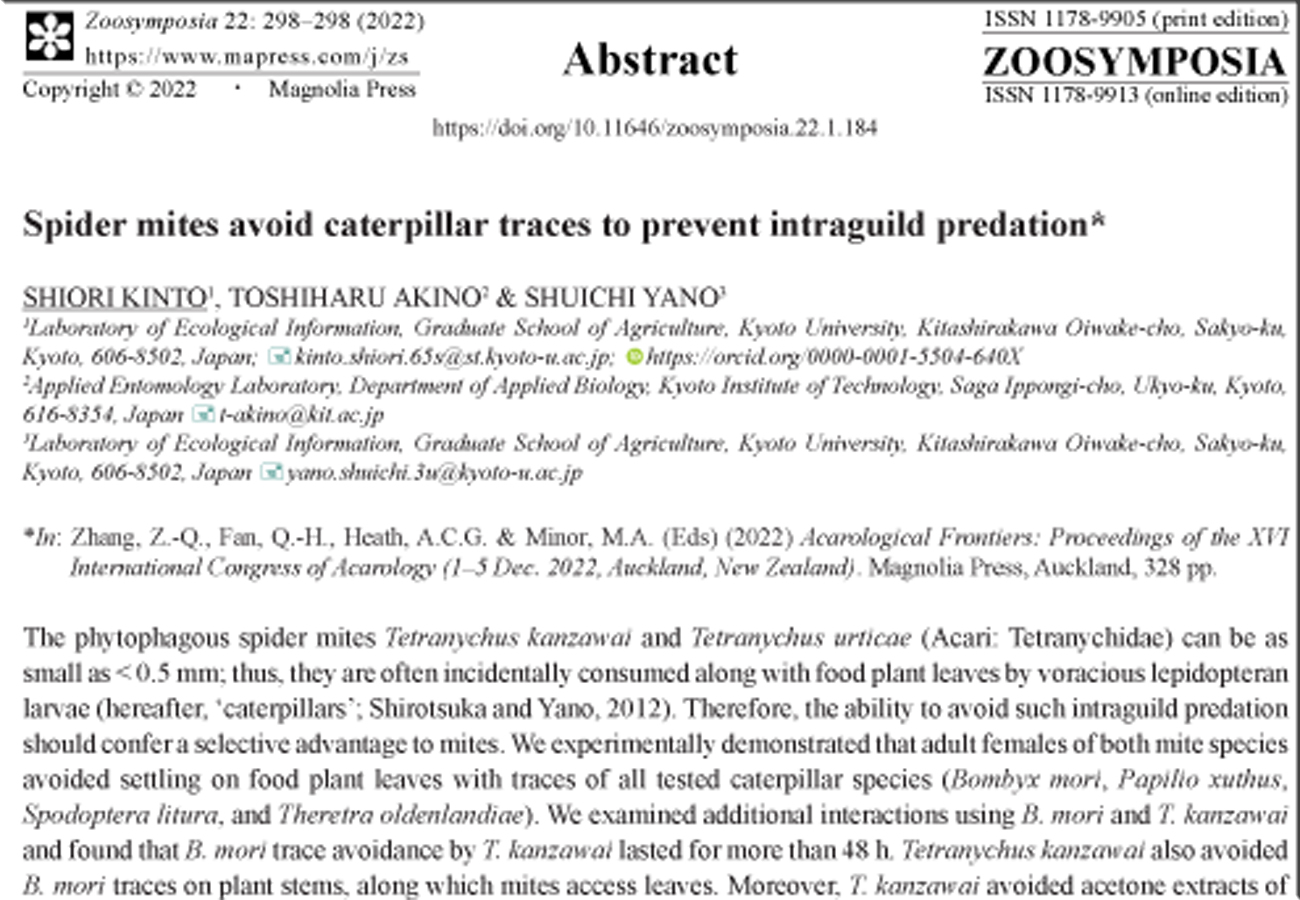Abstract
The phytophagous spider mites Tetranychus kanzawai and Tetranychus urticae (Acari: Tetranychidae) can be as small as < 0.5 mm; thus, they are often incidentally consumed along with food plant leaves by voracious lepidopteran larvae (hereafter, ‘caterpillars’; Shirotsuka and Yano, 2012). Therefore, the ability to avoid such intraguild predation should confer a selective advantage to mites. We experimentally demonstrated that adult females of both mite species avoided settling on food plant leaves with traces of all tested caterpillar species (Bombyx mori, Papilio xuthus, Spodoptera litura, and Theretra oldenlandiae). We examined additional interactions using B. mori and T. kanzawai and found that B. mori trace avoidance by T. kanzawai lasted for more than 48 h. Tetranychus kanzawai also avoided B. mori traces on plant stems, along which mites access leaves. Moreover, T. kanzawai avoided acetone extracts of B. mori traces applied to filter paper, indicating that chemical substances of caterpillar traces are responsible for the avoidance. This study is the first demonstration of a repellent effect of herbivore trace chemicals on heterospecific herbivores. Although spider mites have developed resistance against many synthetic pesticides (Attia et al., 2013; Van Leeuwen et al., 2010), this study showed the potential of using natural compounds simulating caterpillar traces in repelling spider mites from agricultural crops.
References
- Attia, S., Grissa, K.L., Lognay, G., Bitume, E., Hance, T. & Mailleux, A.C. (2013) A review of the major biological approaches to control the worldwide pest Tetranychus urticae (Acari: Tetranychidae) with special reference to natural pesticides: Biological approaches to control Tetranychus urticae. Journal of Pest Science, 86, 361–386. https://doi.org/10.1007/s10340-013-0503-0
- Shirotsuka, K. & Yano, S. (2012) Coincidental intraguild predation by caterpillars on spider mites. Experimental and Applied Acarology, 56, 355–364. https://doi.org/10.1007/s10493-012-9514-4
- Van Leeuwen, T., Vontas, J., Tsagkarakou, A., Dermauw, W. & Tirry, L. (2010) Acaricide resistance mechanisms in the two-spotted spider mite Tetranychus urticae and other important Acari: A review. Insect Biochemistry and Molecular Biology, 40, 563–572. https://doi.org/10.1016/j.ibmb.2010.05.008


